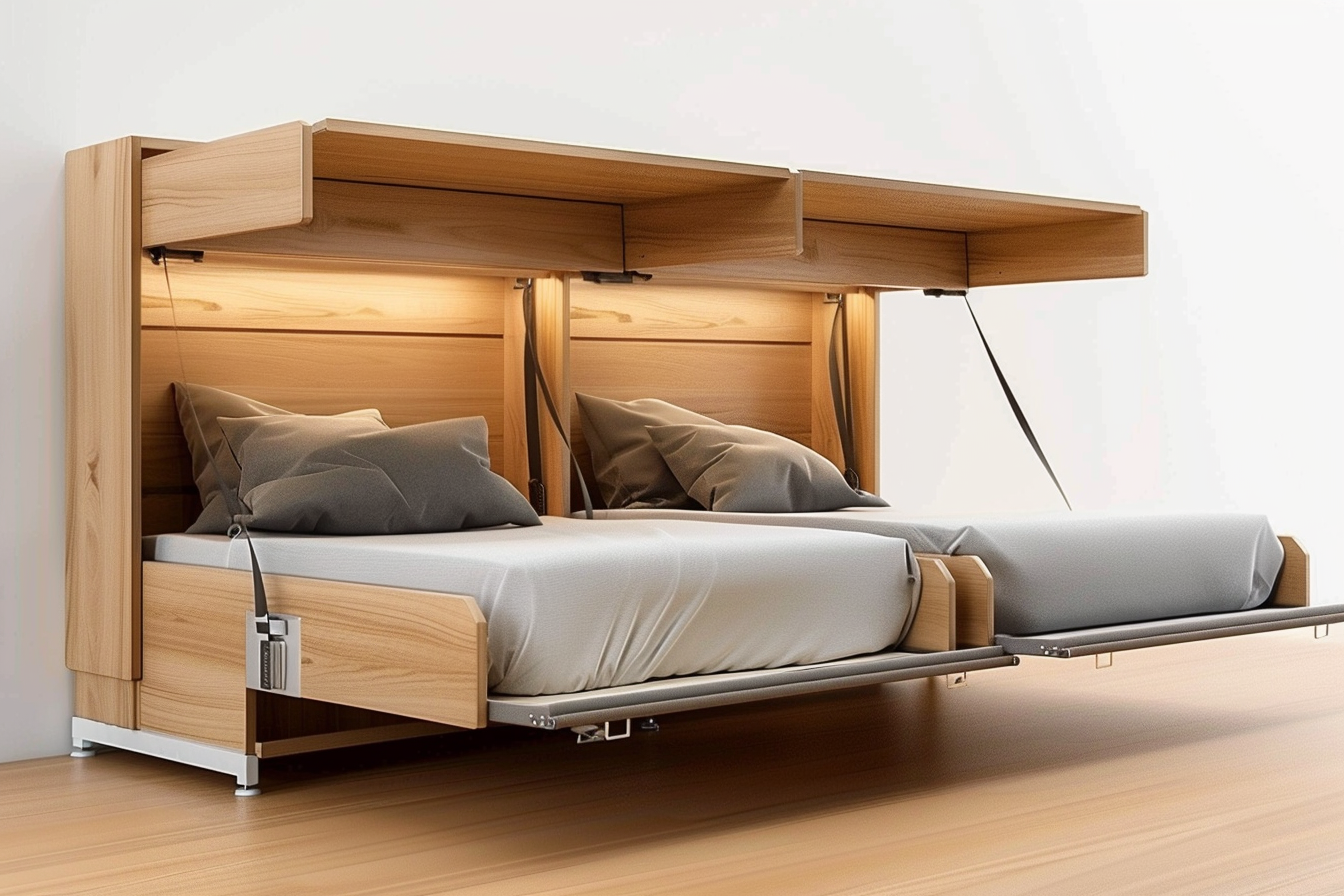Sofa Beds for Small Rooms — Choosing, Arranging and Caring for Space-Saving Sleep Solutions
Transforming a compact living space into a comfortable area that serves multiple purposes requires smart furniture choices. Sofa beds represent one of the most versatile solutions for small rooms, offering seating during the day and sleeping space at night. Understanding how to select, position, and maintain these dual-purpose pieces can significantly enhance your living experience while maximizing every square foot of available space.

Living in a small space doesn’t mean sacrificing comfort or functionality. The right sofa bed can transform your compact room into a versatile area that accommodates both daily relaxation and overnight guests. Making an informed choice requires understanding various factors from sizing to maintenance, ensuring your investment serves you well for years to come.
Measure Your Space and Choose the Right Sofa Bed Size
Accurate measurements form the foundation of any successful furniture purchase, especially in small rooms where every inch matters. Start by measuring the available floor space, accounting for clearance needed when the bed is fully extended. Most sofa beds require an additional 3-4 feet of space in front when opened, so factor this into your calculations.
Consider the room’s traffic flow and how the extended bed will affect movement around other furniture. Standard sofa bed sizes range from twin (approximately 38 inches wide) to queen (60 inches wide), with lengths varying between 72-80 inches when fully extended. Measure doorways and hallways to ensure delivery is possible, as sofa beds tend to be heavier and bulkier than regular sofas.
Compare Frame Styles and Opening Mechanisms
Sofa bed mechanisms vary significantly in complexity, durability, and ease of use. Traditional pull-out mechanisms feature a metal frame that unfolds from within the sofa base, while click-clack or futon-style designs simply fold flat. European-style mechanisms often provide better mattress support but require more clearance space.
Wood frames offer superior durability compared to metal alternatives, though they increase overall weight. Steel frames provide good support at a lower cost but may develop squeaks over time. Consider who will be operating the mechanism regularly – elderly users or children may benefit from lighter, easier-to-operate designs.
Evaluate Mattress Types for Comfort and Compactness
Mattress quality directly impacts sleep comfort and the sofa bed’s longevity. Traditional innerspring mattresses provide familiar support but add significant weight and bulk. Memory foam options offer excellent comfort while remaining relatively lightweight, though they may retain heat.
Air mattresses integrated into sofa bed designs provide customizable firmness levels and compact storage when deflated. However, they require more maintenance and may be prone to punctures. Latex mattresses offer durability and temperature regulation but come at a higher price point.
Place and Style the Sofa Bed to Maximize Small-Room Layout
Strategic placement can make your small room feel larger while maintaining functionality. Position the sofa bed against the longest wall to maximize floor space, ensuring adequate clearance for the opening mechanism. Avoid placing it directly under windows unless you’re comfortable with reduced natural light when the bed is extended.
Create visual continuity by choosing colors and patterns that complement your existing décor. Light colors can make spaces feel larger, while bold patterns might overwhelm a small room. Consider modular designs that allow you to reconfigure the layout as needed.
| Brand/Model | Type | Size Options | Price Range |
|---|---|---|---|
| IKEA Friheten | Corner sofa bed | Twin, Full | $400-600 |
| West Elm Henry | Pull-out sofa | Twin, Full, Queen | $1,200-1,800 |
| CB2 Flex | Modular sleeper | Twin, Full | $800-1,200 |
| Article Soma | Click-clack design | Full | $900-1,100 |
| Wayfair Novogratz | Futon-style | Full | $300-500 |
Prices, rates, or cost estimates mentioned in this article are based on the latest available information but may change over time. Independent research is advised before making financial decisions.
Care, Maintenance and Tips to Extend Lifespan
Regular maintenance ensures your sofa bed remains functional and comfortable throughout its lifespan. Vacuum the mechanism area monthly to prevent dust and debris accumulation that can cause jamming. Lubricate metal components annually with appropriate oils, following manufacturer recommendations.
Rotate and flip the mattress regularly if the design allows, distributing wear evenly across the surface. Use mattress protectors to guard against spills and stains, which can be particularly challenging to clean in sofa bed configurations. Address any mechanical issues promptly to prevent minor problems from becoming major repairs.
Store bedding in nearby closets or under-bed storage containers to maintain the sofa’s appearance when not in use as a bed. Consider investing in quick-setup bedding solutions like fitted sheet sets designed specifically for sofa bed mattresses.
Selecting the right sofa bed for your small room involves balancing comfort, functionality, and space constraints. By carefully considering size requirements, mechanism types, mattress options, placement strategies, and maintenance needs, you can find a solution that enhances your living space while providing reliable comfort for both daily use and overnight guests. Remember that quality construction and proper care will ensure your investment continues serving your needs for many years to come.




